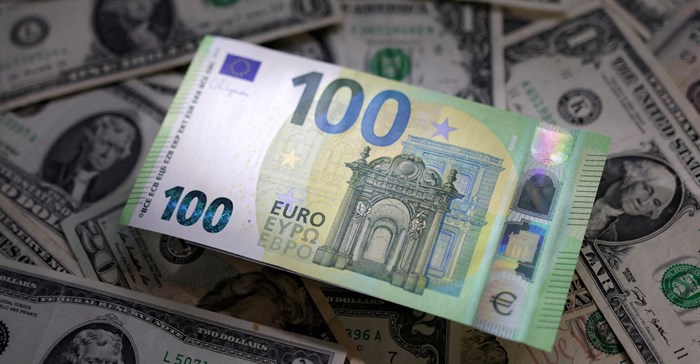The euro fell on Thursday, 25 May, as Europe's largest economy Germany was confirmed to be in a recession, while the dollar hit a two-month peak, benefitting from safe-haven demand as worries mounted about a US default.

Source: Reuters.
The latest concern was raised by Fitch, which put the United States' "AAA" debt ratings on negative watch, a precursor to a possible downgrade should lawmakers fail to agree to raise the $31.4tn debt ceiling.
The greenback has benefited from demand for safe havens with only a week left for a resolution to debt-ceiling talks before the 1 June "X-date", when the treasury has warned it will be unable to pay all its bills.
"It has been risk-off this week and that has benefitted the dollar generally," said Stefan Mellin, senior analyst at Danske Bank.
Escalating signs of economic malaise in Europe, meanwhile, sent the euro lower against the dollar.
The latest sign of weakness came from Germany, where the economy contracted slightly in the first quarter, and so was in recession after negative growth in the fourth quarter of 2022.
"We have seen some divergent cross-Atlantic macro data this week and while Germany is not the euro, the momentum in the economy is stunningly weak," Danske Bank's Mellin said, also noting this week's Ifo and PMI data.
Fed rate in the spotlight
The US dollar index, which measures the currency against six major peers including the euro, rose as much as 0.3% to 104.16, the highest since 17 March.
The euro slipped about 0.2%, enough to refresh a two-month low at $1.0715.
Sterling eased 0.1%, after briefly hitting its weakest since 3 April at $1.2332.
Against the yen, the dollar edged to its strongest since 30 November at 139.705.
The US currency has also been supported by a paring of bets for Federal Reserve rate cuts this year, with the economy proving resilient to the effects of the central bank's aggressive tightening campaign until now.
Traders have trimmed expectations for Fed rate cuts this year to just a quarter point in December, from as much as 75 basis points previously.
They have also ramped up odds for another quarter-point hike in June back to about one-in-three, after several Fed officials sounded hawkish recently, and the minutes from the Fed's latest meeting showed "almost all" policymakers saw upside risks to inflation.
Global risk aversion
"The major drivers at the moment are global risk aversion ... and the repricing along the US forward curve," said UniCredit FX strategist, Roberto Mialich.
"Both are keeping the USD sharp on bid and will probably prevent a complete reversal of the current USD strength even if a (debt ceiling) deal is struck and risk appetite resumes," he added.
The Chinese yuan renewed a six-month low, dropping to 7.0903 per dollar in the offshore market, after recent economic indicators pointed to dull consumer demand and suggested the post-pandemic recovery has already run its course.
Ken Cheung, chief Asian FX strategist at Mizuho Bank, expects the yuan to remain under pressure until China's economic data shows improvement or the People's Bank of China takes policy action to stabilise the currency market.
Australia's dollar has felt the impact of China's economic weakness acutely due to close trade ties, slipping to a six and-a-half-month low of $0.6520.
The New Zealand dollar was still reeling from the central bank's shock dovish tilt on Wednesday, which triggered a 2.2% slide. It slid a further 0.5% to hit its lowest since mid-November at $0.6069.




































